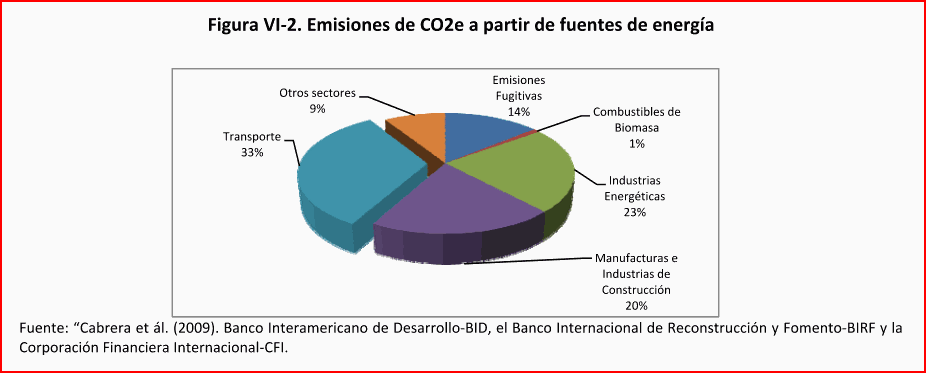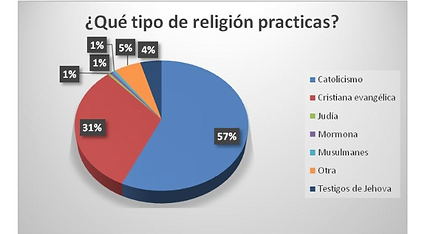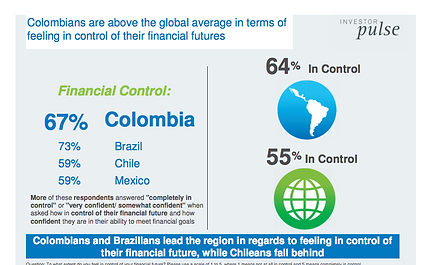

SINCE 2016
HAIR STYLES D.C
"Without doubts society, its culture ad environmental conditions are continually changing, having a mayor impact on literally all organizational products, market and customers, been afected by forces like childbearing rates, attitutes towards work and product,lifestyles, among others."
ATITUD TOWARD GOVERMENT
The goverment have been critiqued by most of the population inside the country but im most of the balances the president of colombia have been a good receibement mostly because of the process he is having with the FARC and some others smaler or not that important initiatives, but on the other hand he have been ataqued for some things he promes on the begining of his goverment, like is the case of thinking on rase the taxes on the hole country.
Taken from:
NUMBER OF MARRIGES
10,300 civil marriages were registered in Bogota notaries in the previous year. Colombia is the fastest growing country in cohabitation between couples (35%) and marriage decreases (19%) Colombia is the second country in the world with the highest rate of cohabiting couples, with 35%, second only to Peru which is 38% and Nicaragua with 30% of people cohabiting.
The Latin American citizens who less undertake to marry, are Colombians (only 20% of adult couples choose marriage as a life choice). Between 50 and 75% of people between 18 and 49 years in the world live in free union.
This rates may not affect us, due to the fact that people who live in free union own a house and they cohabit there, so there will be always an opportunity to work for them as a service organization.
Taken from:
SOCIAL SECURITY PROGRAMS
1. Subsidiaries and help to the most vulnerable people: Is directed to the population that isn’t able to pay their own cotization. The state is going to develop programs that will satisfy their basic needs, their health care and feed them with some economic help and also with goods , and also grantee the Acces to the education for their children, and improve their productive capacity.
2. Proteccion of the risck of losing their income: It cover people that get sick, for an accident, including work, getting old o the dead, and those are the causes of losing productive capacity , and for that reason you are not able to produce enough money to care of your self.
3. POS: It cover you wile you are recovering from a sickness, a prenvencion to get sick, when you are not able to work for a sickness , an accident or maternitie.
4. Pension: You must worked 1000 weeks , from 2005 to 2015 and increasing the number of 50 weeks on the first year and every year until get 1300 week on 2015.
5. Cesantias: Is a insurance in case the people lose their job.
Taken from:
PER CAPITA INCOME
"GDP per capita is gross domestic product divided by midyear population. GDP is the sum of gross value added by all resident producers in the economy plus any product taxes and minus any subsidies not included in the value of the products. It is calculated without making deductions for depreciation of fabricated assets or for depletion and degradation of natural resources. Data are in current U.S. dollars."
According to the world bank, the per capita income of Colombia in 2014 was of 7,970.
In the other hand the magazine “El Dinero” affirms that Colombia it has not grown in this indictor and that also is under the average latin american and also affirms that this problem it's for his productivity and education.
Taken from:


BUYING HABITS
“Purchase of the same brand over and over again, more due to absence of dissatisfaction than because of a positive loyalty.”
According to a publication of “El tiempo” the trends of buying in colombia in 2015 was: “The growing number of convenience stores in residential areas, the supply of environmentally friendly items and increasing the types of products and services that can be purchased online, etc.”
Taken from:
ATTITUDES TOWARD LEISURE TIME
According to a survey of DANE in 2012 - 2013 about the use of free time. The results show that women have more free time that men who spend most of the time in their work.
Taken from:
-
http://formularios.dane.gov.co/Anda_4_1/index.php/catalog/214/export - DANE. (2013). ENCUESTA NACIONAL DE USO DEL TIEMPO (ENUT). Bogotá.

ATTITUDES TOWARD CAREER
According to the databases of ministry of education of Colombia the most 20 careers with increased demand are:
Taken from:

AVERAGE LEVEL OF EDUCATION
Colombia has an eleven-year system of elementary and secondary education, consisting of five years of elementary education, four years of lower secondary education and two years of upper secondary education.
There are three levels of university studies: profesional(professional/undergraduate), maestría/magister (master’s degree), and doctor (doctoral/PhD). There are also non-university higher education degrees, técnico (technician) and tecnólogo(technologist), offered at technical institutions as well as university level institutions.
Taken from:
The undergraduate level has, in turn, three levels of training:
-
Technical Professional Level (related to Technical Professional programs).
-
Technological Level (related to technological programs).
-
Professional Level (related to professional university programs).
Postgraduate education includes the following levels:
-
Specializations (related to programs of Technical Professional Specialization, Technological Specialization and Professional Specializations).
-
Master's Degrees.
-
Doctoral Degrees.
Taken from:
NUMBER OF HIGH SCHOOL AND COLLEGE GRADUATION
Higher education is available from both private and public institutions. Higher education in Colombia is slightly more privatized than U.S. higher education:

Higher education (educación superior) in Colombia follows a three-tier degree structure – undergraduate, graduate and doctoral level.
There are three types of undergraduate (pregrado) degrees:


ATTITUDES TOWARD CUSTOMER SERVICES
Today companies are focused on providing a service type not only the Core Business more also provide a type of quality when it comes to giving and receiving any client information. For many companies this type of service has generated a great importance due to customer happiness when interacting with companies. Quality Control Control Happiness, offers products. All such controls lead to the customer feel satisfaction with the company.
Customer attitudes of the companies not only based on controls , but also in achieving target customers more relevant than others without forgetting the other customers fewer and much less provide worse service to them.
Taken from:
A consumer segmentation section in the report breaks down the Colombia’s consumers by specific age groups, ranging from babies and infants to pensioners; highlighting the factors that influence purchasing decisions and the products in greatest demand for each segment.
Use the Consumer Lifestyle in Colombia report to answer questions including:
-
In what types of stores do consumers shop for food and drink?
-
Do commuters drive cars to work or take public transport?
-
How do ethnic groups influence consumer preferences and expenditure trends?
-
How many households own microwave ovens? Personal computers? Refrigerators?
-
On the whole, are the Colombia’s consumers spenders or savers?
-
Where do consumers go on holiday and how much do they spend?
-
How well are consumers served by the Colombia’s healthcare system?
Buy Consumer Lifestyle reports to:
-
Get a quick, clear and comprehensive understanding of consumer trends, attitudes and behaviour in Colombia with relevant data conveniently laid out in a single, easy-to-read document
-
Immediately gain hard-to-discern insights from local analysts into the factors that influence daily decision-making processes of Colombia consumers as they shop for and buy needed products and services
-
Save research time and effort by quickly identifying unique (or in some cases similar) consumer attributes and characteristics that explain the demand for specific products and services in Colombia
-
Quickly grasp the dynamics and direction of Colombia’s retail distribution network in order to understand how manufacturers and distributors get their products to consumers.
Taken from:

Chilbearing Rates
Represents the number of children that would be born to a woman if she were to live to the end of her childbearing years and bear children in accordance with current age-specific fertility rates.
Taken from:
-
World Development Indicators. World DataBank. (Updated:2014.). Retrieved August 15, 2015, from http://databank.worldbank.org/data//reports.aspx?source=2&country=COL&series=&period
-
Fertility rate, total (births per woman). (Updated 2014.). Retrieved August 15, 2015, from: http://data.worldbank.org/indicator/SP.DYN.TFRT.IN

Average Disponsable Income
GNI per capita based on purchasing power parity (PPP). PPP GNI is gross national income (GNI) converted to international dollars using purchasing power parity rates. An international dollar has the same purchasing power over GNI as a U.S. dollar has in the United States. GNI is the sum of value added by all resident producers plus any product taxes (less subsidies) not included in the valuation of output plus net receipts of primary income (compensation of employees and property income) from abroad. Data are in current international dollars based on the 2011 ICP round.
Taken from:
Air Pollution
Of the 10 Colombian cities reported their measurements of environmental pollution WHO , Bogota and Medellin tied with a particle concentration of type PM10 48 micrograms per cubic meter ( less than 10 microns ) , just after Caldas , which took 58 years Bucaramanga with 39 . According to the Agency , it is recommended that a less than 20 micrograms of PM10 per cubic meter concentration is maintained. It is a problem of public health because these particles causing respiratory diseases son and even lung cancer . The study, which drew its data from local environmental authorities in each city, also reports the concentration of PM2.5 particulate material (s feasible , less than 2.5 microns ) , harmful : Furthermore, and should not exceed 10 micrograms per cubic meter.
Taken from:
-
Martínez, J. (2013, January 16). Contaminación del aire. Retrieved August 9, 2015, from http://www.elcolombiano.com/contaminacion_del_aire-IDEC_225094
POLITION CONTROL
The polution control is very important specialy for the indutries, becuse of all de control the goverment does, because our country is pretty focused on enviromental care , because be are very sensible of the income produced by the natural resources, and her we have a chart that shoe us the control of emitions on the country.
Taken from:

Population Changes by City, State, Region and Country
Currently Colombia presents a total population of 48.32 million of people. Currently, the departments that have the biggest population in Colombia are Bogotá with 7´878.783, Antioquia with 6´456.299 and Valle Del Cauca with 4´613.684. As a matter of fact these departments have a huge population in contrast with the others, because life expectance, quality life and better opportunities are found in these cities, with more professional jobs, better infrastructure, life expectancy and betterhealth insurance.

Taken from:
-
Colombia - Población 2015. (2014.). Retrieved August 16, 2015, from http://www.datosmacro.com/demografia/poblacion/colombia
-
Censo General 2005 - Proyecciones nacionales y departamentales de población 2005-2020. Departamento Administrativo Nacional de Estadística, from https://www.dane.gov.co/files/investigaciones/poblacion/proyepobla06_20/7Proyecciones_poblacion.pdf
Life Expectancy Rate
Colombia is the second country in Latin America with the biggest life expectancy. It has increase until it reaches 76 years for men and 83 years for women. That mean, that Colombian people have won a rate of 8.5 years of life expectancy since 1990.
If we search the rates of 2005 and 2010, statistics showed that in 2015, the population in Colombia was going to be of 45.508.205
Based on date gave by the Veeduria Distrital, Bogotá increase its life expectancy to 75 years. Increasing 3 years analyzing the rates gave 10 years ago.
Taken from:

Attitudes Towards Retirement
In Colombia one on each three persons olden than 65 year have an old-age pension, although the government have made a big effort to give them a fair salary, a great part of the people thinks that what they receive is not enough to cover health aspects and a good living.
Actually the men retirement at 62 years, and the women at 57 years, this affect us because, this people stay more time in their hoses and they probably will need more services in their houses.
Attitude Towards Foreign People
In Colombia there are no cases of discrimination to foreign people. Colombia society is recognized by being a friendly and helpful people with foreign people. The statistics shows that a lot of foreigners come to Colombia either by vacations or to establish their life’s here, the last year only in the month of December 200.000 foreigners came to Colombia.
These good reference that the Colombians have with the foreign people, have increased the international investment, the foreigners found in Colombians really worker people, enthusiastic, disciplined and energetic.
Taken from:
Social Responsability
Colombian population gets benefits from different organizations in the country, different policies and commitment to social responsibility reflect the concern that government and companies have for the Colombian development.
Organizations like “Bogotá Humana”, which was leaded by Bogotá’s ex major, Gustavo Petro, can exemplify how social responsibility can be taken as a major concern in order to improve cultural, economic and social development in a community.
New city mayor, Enrique Peñalosa, made more schools, parks, and aqueduct programs. Also he expands the quota to 185.000 in public schools, with lunch and money subsidies.
Taken from:
LIFE STYLE
Rising incomes and a growing middle class are driving spending on an increasing array of areas, particularly self-indulgent ones such as travel, beauty and health. Improved security conditions, as crime rates fall, are also helping shape a more varied consumer market and encouraging Colombians to get out and spend. Technology is a major growth area across all demographics. Income equality, among the highest in the world, is declining, allowing poorer consumers to spend more widely.
Colombia is a country full of diversity, different cultures and a combination of a rich and incredible native heritage. Normally high population areas are identified in big urban areas such as Bogota, Medellín, Cali and Cartagena, since they count with high recognized schools and colleges equipped with high technology, the best medical facilities in the whole country, high quality health insurance and other different type of insurance and basically a better quality life for citizens.
Taken from:
SEX ROLES
As we can find on portfolio magazine nowadays a woman's shortage of agreement exists with the update of information done by the office of the census of the close conditions. According to his judging ones, in 2010 there are almost 50 million men more than women. According to his judging ones, in 2010 there are almost 50 million men more than women. The total world population was estimated in 6.852 million persons, in round numbers. Of this number, a total of 3.450 million corresponds to persons of the masculine sex and 3.402 million to persons, these right here show us not just that the population roles are not the same that them was some years ago and that range of the products are bigger, because now our customers have a bigger range of roles on the society.
NUMBER OF BIRTHS
According to datosmacros.com in 2013 the number of births in colombia was of 649.742 childrens, 51,29% males (333.299) and 48,70% females (316.443). Also this number decrease according to previous years.
Taken from:

INNER - CITY ENVIRONMENT
According to the dictionary the inner city is usually the older part of the city (central part of the city) where is characterized by low-income groups. In Bogota the most famous group is the people who live in “Bronx” or “Cartucho” where the people lived and face bad situations like air pollution, traffic of drugs, poverty, waste dumping, less green space, etc.
This environments could represent opportunities or threats for the service industry, and also the service industry helps those groups.
Taken from:
RACIAL EQUALITY
“Is the belief that individuals, regardless of their racial characteristics, are morally, politically, and legally equal and should be treated as such. Furthermore, it is the belief that different racial groups, as groups, are equal, with none being inherently superior or inferior in intelligence, virtue, or beauty.”
According to the world factbook Colombia have 5 ethnic groups which are: Mestizos, Whites, Afro-Colombian, Amerindian, Roma and unspecified races.
Bogota and his program “Bogotá Humana” is trying to reduce racial discriminations, pushing equity, equality, tolerance and diversity of ethnic groups taking into account the rights of the Colombians based on the constitution and the state.
Taken from:
REGIONAL CHANGES IN TASTES AND PREFERENCES
A good service company should adjust his services to the continuous changes of consumers, according to his preferences in each region of the country. When a company meets this criteria, will have a competitive advantage from competitors.
ENERGY CONSERVATION
According to embassy of Colombia in washington about the energy in Colombia and how the government is helping this source says: “Colombia is developing a strong diversified energy portfolio composed of clean renewable energy sources, including hydroelectric, wind and solar power, and biofuels. The Government of Colombia is also embarking on an ambitious domestic private-public initiative to harness in sustainable ways its vast wealth of energy resources by developing a globally competitive bioindustry sector, including biocommerce, biotechnology, and environmental services.”
Taken from:
AIR POLLUTION
According to a publication of “El tiempo” and reviewing the portal of “World Air Quality Index” Bogotá has registered an average index of 155 while Pekin (one of the most contaminated city) has an average index of 55
Taken from:
TRUST IN GOVERNMENT
Trust in government is deteriorating in many OECD countries. Lack of trust compromises the willingness of citizens and business to respond to public policies and contribute to a sustainable economic recovery.
Taken from:
Trust is broadly understood as holding a positive perception about the actions of an individual or an organisation. While trust may be based on actual experience, it is for the most part a subjective phenomenon, reflected in the eyes of the beholder. Trust in government represents the confidence of citizens and businesses in the actions of governments to do what is right and perceived as fair. Most importantly the legitimacy of governments is built on being trusted by their citizens, as trust is mainly an enabler of fluent and effective interactions between governments and citizens.
Taken from:
ATTITUDES TOWARD BUSINESS
Colombia is singled out as “an example of a lean but adequate regulatory framework.” Straightforward M&A transactions in non-regulated industries need no approval, unless they involve a public company. “Even the process of company creation, registration and other formalities is simple.”
Regulators are praised for their positive attitude towards business. The system is described as “transparent and efficient,” but personal relationships are still desirable. “Lobbying can be the difference between a deal happening or not, and if that's the case you have nothing if you don't have personal relationships,” experts remark. (chambersandpartners, 2013)
Taken from:
NUMBER OF CHURCHES
According to a national poll commissioned by the nation's leading newspaper, El Tiempo, 81% of the people are Roman Catholic and about 14% belong to other Christian denominations. Officials from the Roman Catholic Church, however, estimate that 90% of the population is Roman Catholic. Protestant groups such as the Seventh-Day Adventists, Jehovah's Witnesses, and the Church of Jesus Christ of Latter-Day Saints make up less than 1% of the population. Other religious faiths or movements include Judaism, Islam, animism, various syncretic beliefs, agnosticism, and atheism. A number of Afro-Colombians, particularly those residing in the department of Choco, practice a syncretic religion which combines elements of Catholicism with African animism. About 1.9% of the population claimed no religious beliefs. (encyclopedia, 2016)
Taken from:

IMMIGRATION AND EMIGRATION RATES
Immigration
Colombia has experienced little foreign influence or immigration. During the colonial period, Spain discouraged the admission of non-Spaniards into the colonies. After independence there were few economic attractions for immigrants. Civil wars were another deterrent. The country generally lacked a clear policy on immigration but never favored it on a large scale. Those who entered from abroad came as individuals or in small family units. Immigration laws provided for the admission of persons who did not jeopardize the social order for personal, ethnic, or racial reasons. In 1953 the Institute of Land Settlement and Immigration was set up to direct the colonialization of the underdeveloped regions of the country and was given the power to organize immigration for this purpose. After World War II, Colombia encouraged the immigration of skilled technicians, and in 1958 procedures were specified for the admission of refugees. Little was done, however, to implement these measures.
Emigration
Emigration from Colombia is one of the largest in volume from Latin America. According to the 2005 Colombian census or DANE, about 3,331,107 Colombian citizens currently permanently reside outside of Colombia. Other estimates, however, suggest that the actual number could exceed 4 million, or almost 10 percent of the country's population. During the years 1996-2000 (peaking in 2000) so many Colombians left due to violence and the economy, that it became known as the Colombian diaspora. Many of those who moved were educated middle and upper middle-class Colombians; because of this, the Colombian diaspora can be referred to as a brain drain. However, significant numbers of poor Colombians have also been documented. The most common destination for emigration was the United States. In Europe, Spain has the largest Colombian community on the continent, followed by the Italy and United Kingdom. Many Colombians are also dispersed throughout the rest of Latin America. Mexico, Argentina and Chile received political refugees in the mid-to-late 20th century, and Colombian guest workers in the early 2000s.
Taken from:
NUMBER OF SPECIAL-INTEREST GROUPS
Historically, the Roman Catholic Church and the armed forces have played an important role in Colombia's political system. Numerous Colombianists, such as Jonathan Hartlyn, have observed that the most powerful interest group in the 1980s was a small, informal elite composed of business, political, religious, and some military leaders. Some have argued that these power brokers effectively usurped power from Congress and the president by making the decisions--sometimes at informal meetings held in private homes--about what policies or laws should be implemented prior to final action by the legislature.
Observers have contended that the two main parties and the two most powerful interest groups--the armed forces and the Roman Catholic Church--traditionally have co-opted emerging sectors of Colombian society, thereby limiting the development and influence of other potential interest groups. For example, the Roman Catholic Church and the political parties created the two major labor unions at a time when labor was beginning to develop strength. They also established government-sponsored community action programs when the lower classes were beginning to develop some political awareness. The government also contained increasingly militant workers, peasants, and students through co-optation and intimidation. Economic groups, such as associations of farmers and industrialists, began to proliferate and become highly visible in the 1960s and 1970s, but their influence in decision making in the 1980s remained clear.
Take from:
OZONE DEPLETION

ATTITUDES TOWARD SAVINGS


Number of Deaths
Between January 1 to August 31, 2015 , 131,415 deaths were reported without En fetal nationwide. The distribution by sex showed that 54.66 % of deaths were men ( 71,830 ) and the 45,33 % were women ( 59,566 ) .
Taken from:

Use of Birth Control
Colombia is seeking not implement a type of birth control under political , if not looking make through advertising and the availability of programs pregnancy, decides to maintain a population of caution when deciding to have a child or not . In 2005 the national total of mothers having children spent an average of 2.48 which with the passing of the years has been declining. At this time the Chocó and Amazon are the areas which are currently the highest number of children per mother average due to economic resources with an index of 4.0 in average per mother.
Taken from:
-
Pro Familia. (8 / 11 / 2015). La Política De Natalidad En Colombia. 23 / 08 / 2015, de Pro Familia Sitio web: http://lapoliticadenatalidadencolombia2.blogspot.com/ .
CHURCH MEMBERS
Rigth now the number of church menbers in colombia is one of the bigges in most countries,Colombia currently has 98% of Christians. Nevertheless, the number of churches does not affect our industry.
Taken from:
Number Of Divorces
Based on the statistics the Superintendica de Notaria y Registro of Colombia gave, between January and May of 2015 there where registered 7.721 divorces in Colombia, that mean an increase of 11,22 % comparing with 2014.
Based on data received by the 898 notaries in the country, the cities with the biggest number of divorces are Medellin, Bogota and Cali. Bogotá with an increase of 12,13% (1.987 divorces) and a total of 3.839 civil marriages.
It’s important to take in account that central and Andean regions, are the ones that registered the biggest number of divorces, increasing between 30 and 40 percent.
Taken from:
Traffic Congestion
First of all, Bogotá works with a regulation program for the traffic in the city, that consists in time limitations for particular vehicles which corresponds to the days of the week Monday-Friday during 6: 30-8: 30 and 3: 00-7: 30 depending on the day if it is odd or even. For us as a company and our industry, vehicles are available for the stylists so they can achieve their appointment.
This due to the fact that millions of people waste a lot of time daily waiting for a good transport service, and these cause the loose of opportunities in the city, because they waste more time arriving to their destiny. Bad infrastructure in the city streets and the bad organization, cause that the 700.000 of vehicles keep trap in traffic jams.
Taken from:
Attitudes Toward Work
Despite the fact that unemployment in Colombia has decreased, bogotas citizes thought that there’s not a good attitude towards work in the city. Based on a document of “Universidad Externado” and the DANE, around 2 million of employees consider that they work in an inappropriate environment and another 38.1% is not happy with their job. In Colombia we have a 50% of informal workers who did their activity just to survive.
Studies have shown that 90% of your long term happiness and good attitude comes not from the external world, but the way your brain processes and see the world. Additionally, the 75% of success in the workplace is predicted by your positive attitudes, your optimism levels, social support and your ability to see stress not as a threat instead as a challenge that will help you to get expertise, increase your productivity levels and be successful.
On the other hand, bad attitudes reduce creativity, increases internal competition (among employees), decreases productivity and doesn´t allow you to rise your expertise and social values, because they see objectives as a source of stress and threat, not as an opportunity to become successful.
Taken from:
-
Anchor, S. (n.d.). Work happier: The happy secret to better work. Retrieved August 15, 2015, from https://www.ted.com/playlists/137/shawn_achor_work_happier
Attitudes Toward Investing
The arrival of investment to Colombia, shows that the country is going in a good way and that the government is doing things well. The arrival of a new banc that has 130 years of experience, shows that we are doing the things in a good way” Juan Manuel Santos said.
Colombia has maintained some principles and values in its economic management, that had lead Colombia being one of countries in all Latin American with less instability, the only one that has never restructured its debt and a country that has been friendly with external investment.
Taken from:
Value Placed on Leisure Time
Many people in their time can do a lot , but it is very important that people can enjoy their time in their homes , this creates in people more effectively and tranquility during the week in their activities. The importance of a home in any person during his life is of great importance because when many people took the most time at work is frowned upon.
Taken from:
Waste Management
According to Colombian environmental regulations, the law 1258 of 2008 established by the Ministry of environment, forces all Colombian citizens within the territory, to take care of the environment and use the appropriate recycling and cleaning methods to help and promote for environmental health, applying a sanction known as the “environmental sanction” to every single natural person who doesn´t take care of the environment and promote its well-being.
Besides Bogota's government has developed and fomented a environmental program called “Basura Cero”, its objective is to reduce solid waste, without being incinerated, but just taking good advantage of them and returning 100% of them to its product cycle, it also tries to promote and incentive people to protect the environment and develop an environmental care culture in every single citizen.
Taken from:

"Socio Cultural, environmental and Demographic forces introduction was developed based on : David, F. (2011)."
Strategic Management: Concept & Cases (15th ed.pp 67-68).
Florence, United States : Pearson